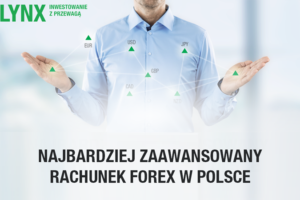Spot transactions and the immediate market. What is worth knowing about them?
If you do not know what spot transactions are, how they proceed and who the participants of the currency market are, then this article is just for you.
With current technologies, we have no problem determining the rates of almost all currency connections in the world. The spot market is often called a spot or immediate market. In the following article, we'll take a closer look at its functioning.
Be sure to read: The Kondratieff cycle - what awaits us in the coming years?
Maximum two business days
Immediate transactions are transactions in which no more than two business days pass between its conclusion and its execution. It is important that the date of currency delivery must be a working day at both banks that take part in the settlement of the order. If it falls on a day off in at least one country of origin, the settlement date is the next business day for both banks. Where did the two days come from? It was created on the basis of practice on international currency markets, determining the time of flow of exchange of funds between the buyer and seller.
Spot course
Basically, it tells us at what price someone is willing or to sell the base currency for the quote currency, as of the spot currency date. It should be remembered that these are not futures contracts and by entering into such a transaction we undertake to physically deliver the currency on the day of its settlement.
Who is the market creator?
Suppose in this example that the company asking Bank X for the purchase price of 1 000 000 dollars will receive a quote for sale of USD by the bank in the amount of 3,8040 (we do not take real exchange rates; only examples of BID / ASK quotes are given). We also assume that this is a market quote that does not take into account the bank's margin, which it adds to each transaction. Bank X therefore needs to buy dollars on the interbank market, thus becoming its user. Therefore, he is looking for an institution that wants to resell it to him at 3,8040. There is Bank Y matching this transaction.
In practice, however, the concept of a market creator (Market makers) usually refers to the most active banks on the stock exchange, which always anchor the exchange rate, thus creating a pair's quotes. These institutions, in addition to the high risk they undertake in connection with their continuous presence on the market, have priority and the ability to close their currency transactions with other banks at such buy and sell rates as they dictate.
Why not a broker?
We could wonder here why companies buy currency at the highest price and sell at the lowest via a bank on the market. Is an enterprise alone unable to anchor buy and sell rates and market these transactions through a broker? Unfortunately, this is not feasible due to the volumes. They generate far too low turnover to be able to interest potential recipients with their exchange rates. Companies are not an equal partner for banks.
Exchange rate table
The bank prepares information on current buying and selling rates for its clients in two cases. The first one is cash transactions of purchase and sale of foreign currencies, which are made in the bank window on the date of today's currency, that is on the date of the transaction. The second case is the purchase or sale of a foreign currency that does not exceed the threshold set by the bank, e.g. 20 000 USD. If the customer wants to exchange a larger amount of one currency for another, there is an option to negotiate the exchange directly with the money management department. However, it should be borne in mind that banks are not obliged to inform their client about it.
The exchange rate table usually contains three rates: buying, average and selling. Often, enterprises that are not well organized in terms of monetary policy lose on currency exchanges after quotations available from the exchange rate table. It is characterized by large spreads, focused on small amounts of potential exchange.
The spot market has a very important function. It is the basis of the starting price for calculating forward rates in transactions outrightowych. It is also a contractual reference between the parties that exchange two currencies in swap transactions. We also take it into account when operating on unfunded contracts. It is the reference rate for those contracts where there is no physical currency exchange and only settlement of exchange differences. It is also a component element in calculating option prices and rates of its implementation. It is therefore worth knowing the specifics and operation of the spot market, due to its close relationship with other currency market instruments.






















![Forex Club – Tax 9 – Settle tax on a foreign broker [Download the Application] Forex Club - Tax 9](https://forexclub.pl/wp-content/uploads/2024/02/Forex-Club-Podatek-9-184x120.jpg?v=1709046278)
![Trading View platform – solutions tailored to the needs of traders [Review] trading view review](https://forexclub.pl/wp-content/uploads/2024/03/trading-view-recenzja-184x120.jpg?v=1709558918)
![How to connect your FP Markets account to the Trading View platform [Guide] fp markets trading view](https://forexclub.pl/wp-content/uploads/2024/02/fp-markets-trading-view-184x120.jpg?v=1708677291)
![How to invest in ChatGPT and AI? Stocks and ETFs [Guide] how to invest in chatgpt and artificial intelligence](https://forexclub.pl/wp-content/uploads/2023/02/jak-inwestowac-w-chatgpt-i-sztuczna-inteligencje-184x120.jpg?v=1676364263)




![Izabela Górecka – “Success on the market depends not only on knowledge, but also on emotional stability” [Interview] Izabela Górecka - interview](https://forexclub.pl/wp-content/uploads/2024/04/Izabela-Gorecka-wywiad-184x120.jpg?v=1713870578)
![WeWork – the anatomy of the collapse of a company valued at $47 billion [WeWork, part II] wework bankruptcy story](https://forexclub.pl/wp-content/uploads/2024/04/wework-bankructwo-historia-184x120.jpg?v=1711729561)
![Adam Neumann – the man who screwed up Softbank [WeWork, part AND] adam neumann wework](https://forexclub.pl/wp-content/uploads/2024/04/adam-neumann-wework-184x120.jpg?v=1711728724)




![The most common mistakes of a beginner trader - Mr Yogi [VIDEO] Scalping - The most common mistakes of a beginner trader - VIDEO](https://forexclub.pl/wp-content/uploads/2024/03/Scalping-Najczestsze-bledy-poczatkujacego-tradera-VIDEO-184x120.jpg?v=1711601376)
![Learning patience: No position is also a position - Mr Yogi [VIDEO] Scalping - Learning patience - No position is also a position - VIDEO](https://forexclub.pl/wp-content/uploads/2024/03/Scalping-Nauka-cierpliwosci-Brak-pozycji-to-tez-pozycja-VIDEO-184x120.jpg?v=1710999249)
![When to exit a position and how to minimize losses - Mr Yogi [VIDEO] Scalping - When to exit a position and how to minimize losses - VIDEO](https://forexclub.pl/wp-content/uploads/2024/03/Scalping-Kiedy-wyjsc-z-pozycji-i-jak-minimalizowac-straty-VIDEO-184x120.jpg?v=1710336731)




![Market Maker, STP, ECN - What is the difference between Forex brokers? [VIDEO] MM STP ECN V5b](https://forexclub.pl/wp-content/uploads/2021/04/MM-STP-ECN-V5b-300x200.jpg?v=1618421777)














Leave a Response